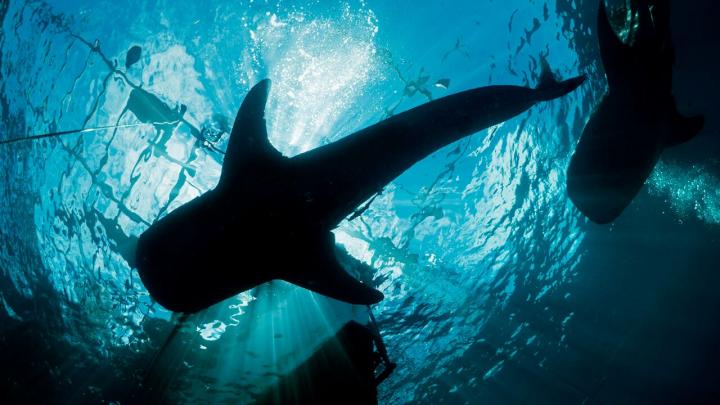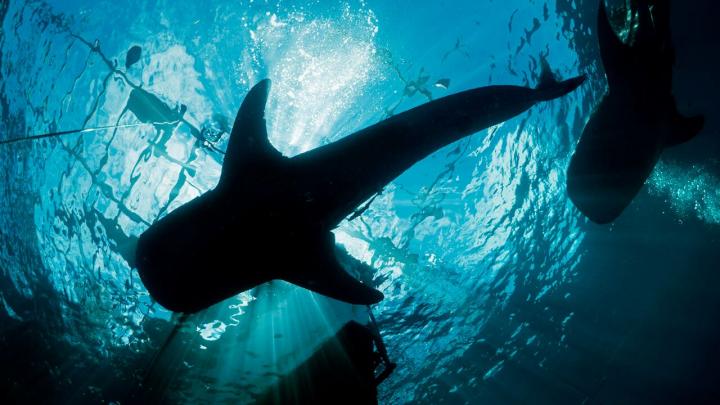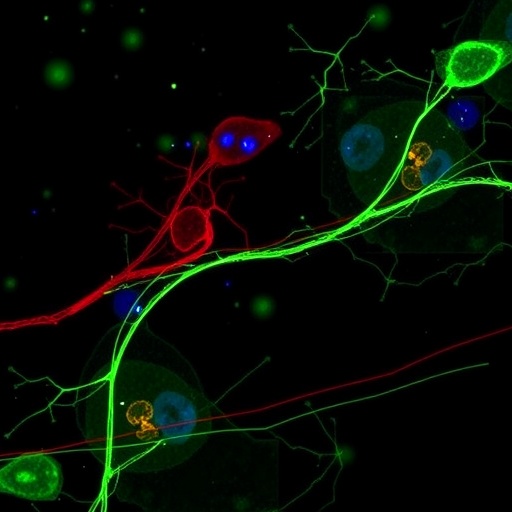
Credit: Georgia Aquarium
ATLANTA (Aug. 2, 2017) – For the first time ever, scientists successfully performed health assessments, including collecting blood and biological samples, taking measurements and attaching satellite tracking tags, to a population of wild whale sharks – the world's largest fish, classified as "endangered" since 2016. The research advancement, which occurred in Indonesia's remote Cendrawasih Bay, has significant implications for unlocking the mysteries surrounding the overall health of whale sharks — including the potential impacts of tourism on their health. These details can better inform future conservation policies to protect and encourage their population recovery.
"The data and biological samples we collected provide an invaluable snapshot into the lives and activities of a species we know relatively little about," said Alistair Dove, PhD, vice president of research and conservation at Georgia Aquarium. "As we begin decoding what we've collected from wild whale sharks, we become better positioned to protect them and educate the public about their importance."
Scientists wasted no time cataloguing the information and testing the samples, setting up a field laboratory on their research vessel. This testing continued at a laboratory at the State University of Papua (UNIPA) in Manokwari, the capital of Indonesia's West Papua Province. While at the school, researchers also presented to students and faculty about the results of the expedition and the techniques used to collect the samples.
This expedition is the result of an international collaboration between Georgia Aquarium, Conservation International (CI) and the Indonesian government that brings together critical skillsets from each of the partners. Georgia Aquarium experts, who care for whale sharks daily, brought to the expedition critical knowledge and proven techniques ensuring the welfare of the wild whale sharks while teams collected the biological samples. This was complimented by Conservation International's experience with local whale shark populations and strong relationships with the Indonesian government and local coastal communities, without which this expedition would not have been possible. Finally, the Indonesian Ministry of Marine Affairs and Fisheries (MMAF) and the Cendrawasih Bay National Park Authority hosted and permitted the expedition and will be integrating the findings into their local and national policies on whale shark conservation and tourism management.
Dr. Selvy Tebay, S.Pi., M.Si., Vice Rector IV of University of Papua (UNIPA) shared, "The involvement of UNIPA's scientists allows for an expansion of expertise within the West Papua Province. Local scientists studying whale shark migratory behaviors shared their knowledge with Conservation International and Georgia Aquarium, and have in turn received a more complete worldview of whale shark migratory patterns — an important aspect of conserving a wide-ranging species. This will lead to practical and tangible conservation benefits for the species as well as wider marine tourism management within West Papua, which is a priority for the Indonesian Government."
The migratory species is constantly on the move, making it extremely difficult to perform health assessments or collect biological samples on free-swimming whale sharks. As luck would have it, the perfect opportunity came in the form of a unique interaction between fishers and whale sharks that occurs in Cendrawasih Bay.
Indonesian fishers in the area target schools of baitfish by suspending large nets beneath specialized bagan floating platforms and using bright lights at night to attract the baitfish above the nets – which are quickly lifted in order to catch the entire school at once. This "free" meal is too good to pass up for whale sharks, which can be seen feeding on the baitfish around the bagans all year round. In the process, these animals can accidentally trap themselves in the nets. Fishers, who see whale sharks as a sign of good fortune, release them after clearing the nets of their catch.
In 2012, CI scientists repeatedly observed this peculiar situation, and in 2015 opportunistically deployed the world's first fin-mounted archival satellite tags on wild whale sharks prior to their release — resulting in a wealth of movement data which has since helped to inform the management and conservation of the species in Indonesia.
"The unique situation in Cendrawasih Bay provides researchers unprecedented access to these massive animals. These health assessments are designed to provide important insights on whether whale shark ecotourism and research activities are having a significant impact on the sharks' welfare. This is critically important for us to understand, both to inform our tagging and research activities and especially for the Indonesian government to be able to sustainably manage whale shark ecotourism in a manner that benefits local coastal communities without negatively affecting the whale sharks." said Mark Erdmann, vice president of Asia-Pacific marine programs at Conservation International.
Ben G. Saroy, Head of Cendrawasih Bay National Park Authority, agreed, "Cendrawasih Bay, home to the biggest whale shark population in Indonesia, requires comprehensive information to manage this endangered species. The data gathered from this research will complement existing information and be used to strengthen conservation and tourism management policies within the bay — which will ultimately bring benefits to the indigenous communities."
Andi Rusandi, Director of Marine Conservation and Biodiversity at MMAF, shared the importance of this study, "As we strive to develop whale shark ecotourism in Indonesia to benefit our local communities and these majestic animals themselves, it is important to highlight conservation. We have already published the Whale Shark Tourism Handbook as a guide, and the results of this study will further enrich our knowledge on the species. We greatly appreciate this support from our partners, and look forward to understanding these results and their recommendations in greater detail."
Over the course of the expedition, the team was able to successfully deploy seven additional fin-mounted satellite tags, each of which are expected to transmit valuable data on the shark's movements and diving behavior for up to two years.
###
To find out what researchers discover from these health assessments, stay tuned to Georgia Aquarium's Cendrawasih Bay Blog at news.georgiaaquarium.org and follow Georgia Aquarium on Facebook, Twitter, and Instagram. Track tagged whale sharks in real-time by following @wheres_domino on Twitter.
Photos from the expedition: https://www.dropbox.com/sh/suphf6dc56o4mav/AAD982IRASFRc_7A2k7TjjMqa?dl=0
ABOUT GEORGIA AQUARIUM
Georgia Aquarium is a leading 501(c)(3) non-profit organization located in Atlanta, Ga. that is Humane Certified by American Humane and accredited by the Alliance of Marine Mammal Parks and Aquariums and the Association of Zoos and Aquariums. Georgia Aquarium is committed to working on behalf of all marine life through education, preservation, exceptional animal care, and research across the globe. Georgia Aquarium continues its mission each day to inspire, educate, and entertain its millions of guests about the aquatic biodiversity throughout the world through its hundreds of exhibits and tens of thousands of animals across its seven major galleries. For more information, visit georgiaaquarium.org
ABOUT CONSERVATION INTERNATIONAL
Conservation International (CI) uses an innovative blend of science, policy and partnerships to protect the nature people rely on for food, fresh water, and livelihoods. Founded in 1987, CI works in more than 30 countries on six continents to ensure a healthy, prosperous planet that supports us all. Conservation International have been working in Indonesia since 1991, supporting conservation efforts to achieve sustainable development. Learn more about CI and the "Nature Is Speaking" campaign, and follow CI's work on Facebook, YouTube and Instagram.
ABOUT WHALE SHARKS
Whale sharks are the largest fish in the ocean, and due to their size and large cartilaginous skeleton they are very hard to accurately weigh. Females are larger than males as in most shark species. The average length is between 18 and 32 feet. Their mouths can reach up to four feet in diameter but their throats are only about the size of a quarter limiting their prey to zooplankton and small fishes. Whale sharks are currently listed as "Endangered" on the International Union for the Conservation of Nature Red List and populations have decreased dramatically in the last several years due to overfishing in Asian markets. To learn more about whale sharks, visit Georgia Aquarium's animal guide. To learn more about Georgia Aquarium's whale shark research and conservation efforts, please visit georgiaaquarium.org/conserve.
Media Contact
Natalie Terchek
[email protected]
312-558-1770
@GeorgiaAquarium
Buy Online and Save | Visit Today | Georgia Aquarium | Located in Downtown Atlanta, Georgia
Original Source
http://news.georgiaaquarium.org/stories/first-successful-wild-whale-shark-health-assessments-performed





